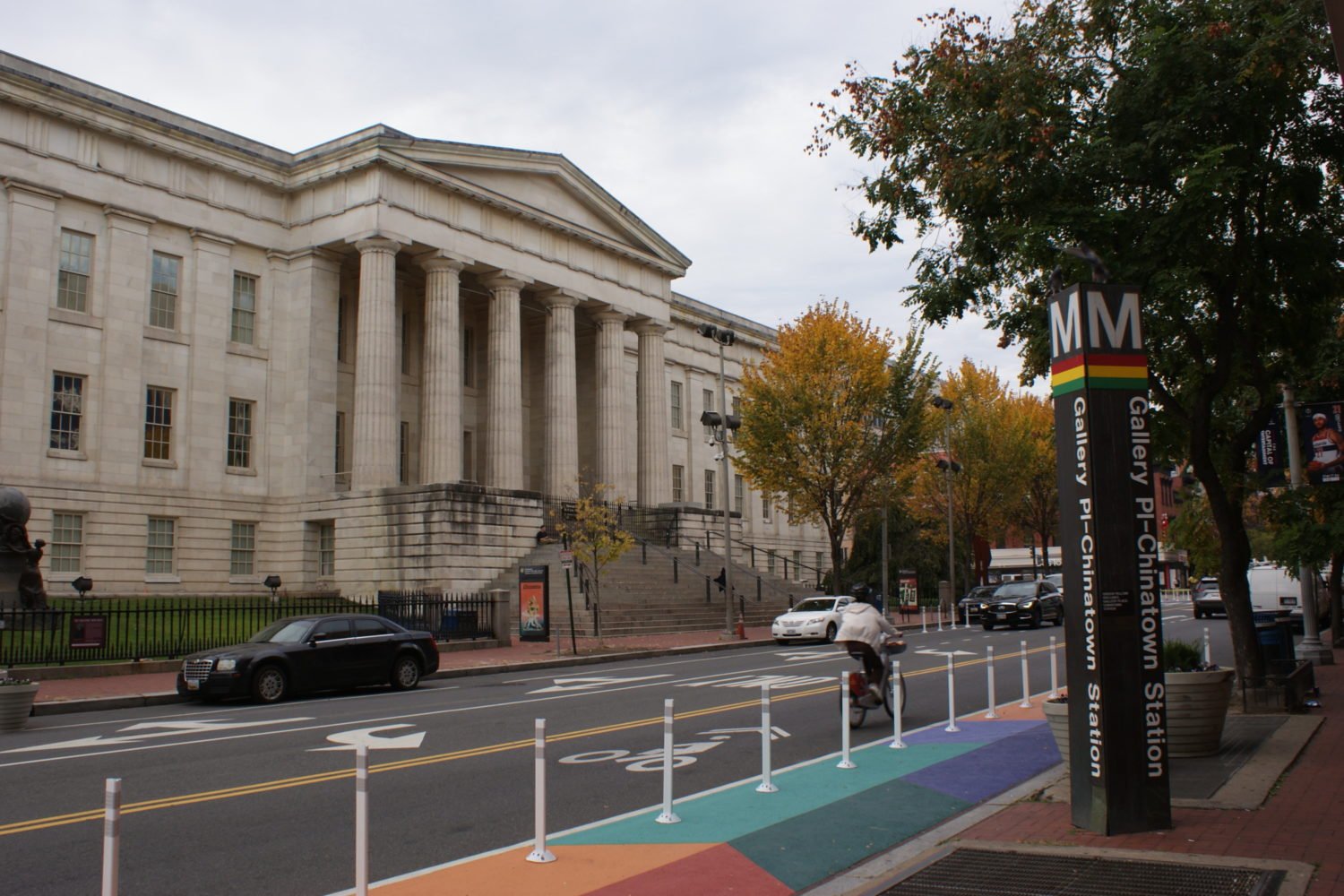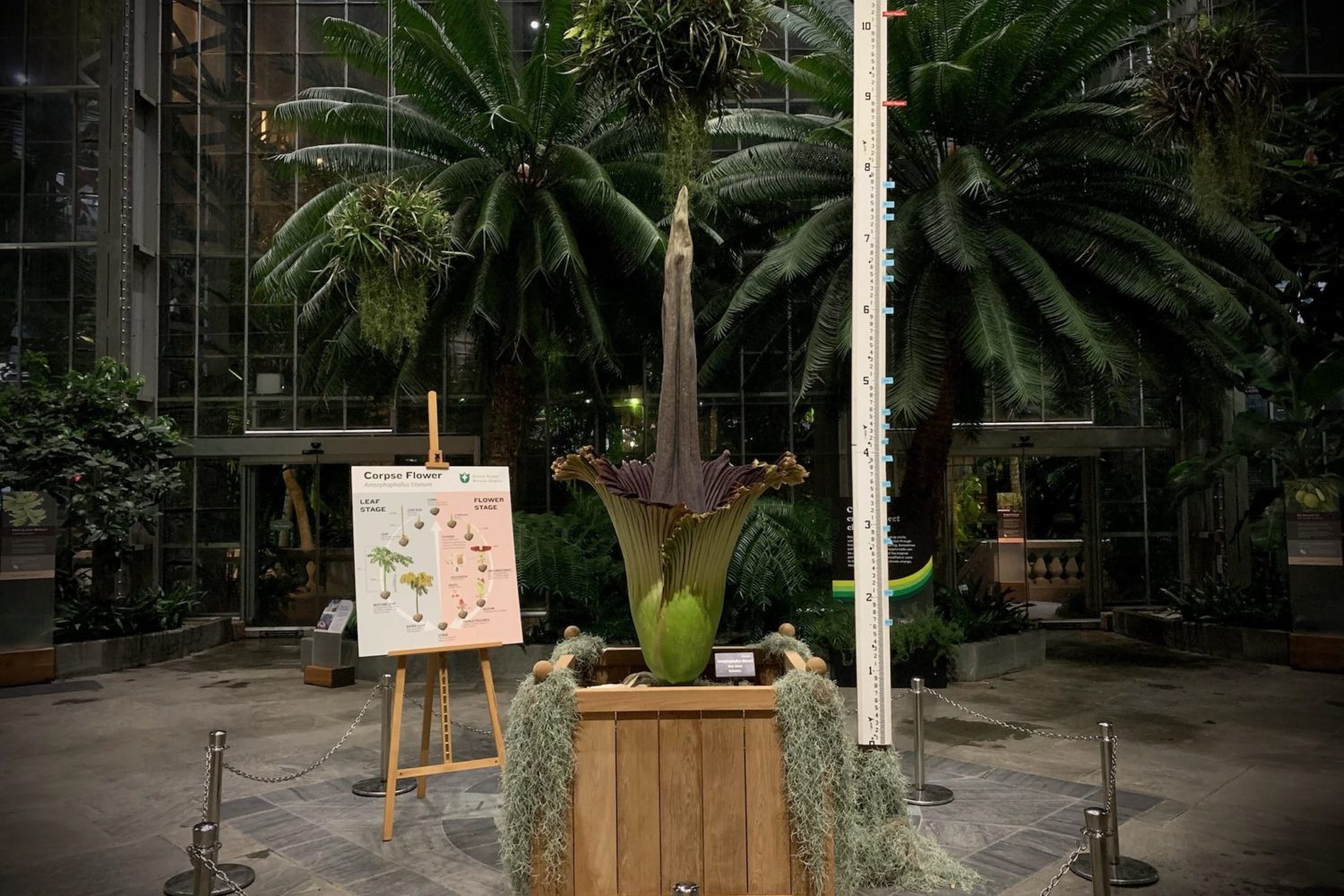Going Green
When John Rakestraw and Mary Katherine Morn remodeled, they had their Arlington brick home insulated with cellulose, a material made from recycled paper, and a new roof covered in rubber shingles. They also chose bamboo flooring, installed a high-efficiency clothes washer, and used nontoxic paints and recycled composite decking.
When it comes to remodeling, many Washingtonians are going green.
The green-building movement, which began 15 years ago on the West Coast, promotes the use of nontoxic and recycled materials and environmentally friendly practices.
“It’s about being more conscious of using fewer resources and reusing what already exists,” says Lorena Checa, an architect in Takoma Park.
Green remodeling doesn’t just save natural resources, says Nadav Malin, editor of the Vermont-based Environmental Building News. Homes are healthier for inhabitants, he says, when nontoxic materials are used.
Green products can be more expensive but save money in the long run. Compact fluorescent lightbulbs can cost $5 or more a bulb, but they use 66 percent less energy and last up to ten times longer than a standard bulb. That saves about $30 in energy costs over the life of the bulb.
Other green choices can be economical from the start. Rakestraw and Morn used an old chest as a vanity in their bathroom and incorporated an old butcher-block tabletop into the kitchen counter rather than buying new pieces.
Interested in making your home more energy efficient and green? Consider these principles:
Begin in the Yard
When putting on an addition, try to save existing trees and plant new trees to provide shading.
A rain barrel captures water from downspouts and can hold 50 to 75 gallons. The barrels often have a spigot where you can attach a hose to water your yard. Or you might plant a rain garden, a bowl-shaped area of plants that absorbs storm water from downspouts.
Reducing the amount of proposed driveway pavement will minimize storm-water runoff, which contains a high level of oil, fertilizer, pesticides, and other pollutants that can filter into local streams.
Conserve Your Energy
Planting trees that provide shade and cut down on air-conditioning costs isn’t the only way to save on energy bills.
Designing an addition to take advantage of natural light is another. So is replacing single-pane windows with double-pane ones with low-emissivity coatings—a layer of metallic oxide that helps keep heat from passing through.
Consider a tankless hot-water heater, which heats water only when you need it, or solar panels, which generate power from the sun for home heating.
Look for dishwashers, washing machines, and other appliances that have the government’s Energy Star label and think about junking an old refrigerator rather than running it in your basement or garage.
Increasing insulation in your walls and insulating your hot-water heater can save energy. Building less wall space so natural light from one area spills into another helps minimize electricity use. Installing dimmers can too.
You can cut down on water usage by installing dual-flush toilets that use a maximum of 1.6 gallons a flush, compared with 3.5 to 5 gallons for older toilets. Some newer showerheads and faucets use less water than older or conventional models.
Material World
More building materials are offered in nontoxic, renewable materials, meaning they are made from natural resources that can be regularly replenished. Examples include bamboo or cork flooring, cellulose or soy-based insulation, and strawboard or wheatboard used in cabinets and furniture.
Some material, like glass tile for countertops, contains recycled content. HomeÂowners can also use reclaimed or recycled wood in flooring.
Breathe Easier
To improve indoor air quality, consider area rugs instead of wall-to-wall carpeting and padding, which can release unhealthy fumes and trap pollutants such as pesticides brought in from outside.
For walls, try zero- or low-VOC (volatile organic compounds) paints, coatings, and sealants, which are nontoxic.
You can help prevent mold buildup by maximizing airflow; remodeled rooms should have windows that facilitate cross breezes. Ceiling fans or a whole-house fan move more air when windows are open.
“A house designed for natural ventilation will not need as much air conditioning,” says Lorena Checa.
Dumpster as a Last Resort
Just because you are remodeling doesn’t mean you need to fill a Dumpster with debris. Almost all of a home’s contents—flooring, molding, windows, doors, wood, sinks, drywall—can be recycled or reused, usually at no additional cost, says Robyn Griggs Lawrence, editor of Kansas-based Natural Home .
Ask your county recycling office what is accepted at the curb and at drop-off locations or call stores such as Community Forklift and Habitat for Humanity ReStore, which pick up items.
When Brett and Jacky Jenks remodeled their Arlington house, they donated their old windows, reused their kitchen cabinets by hanging them in the garage, and recycled their metal waste at the curb.
Where to Learn More
Green design and building options are more widely available than even a few years ago. Some products, such as Energy Star appliances, have become mainstream.
“In this region there is an expanding consciousness about the value of being green,” says Stella Tarnay, manager of the Arlington Green Home Choice Program, started in 2003.
Still, an ecofriendly remodel is no cakewalk. Only a fraction of remodeling projects are all green, says Nadav Malin. So you may need to look beyond Home Depot to find professionals and materials.
Here are some resources to get you started. These were recommended by local and national architects, builders, and other specialists in green design and construction.
“Every little thing that you do helps,” says Checa.
Getting Started
BuildingGreen Suite, buildinggreen.com. A subscription-based resource for environmentally sensitive design and construction. Includes articles, product listings, and case studies. $12.95 for a one-week subscription, $199 for a year.
Co-op America’s National Green Pages, coopamerica.org; 800-58-green. A directory of approved green businesses—ranging from home decor to construction materials. Free for co-op members, $11.95 for nonmembers.
Sustainable Building Resource Directory, sbrd.org. A database of green businesses, organizations, and programs in the Mid-Atlantic.
Good Books
Green Building Products: The GreenSpec Guide to Residential Building Materials, edited by Alex Wilson and Mark Piepkorn. A comprehensive guide to green building materials with company listings so you can find products you’re looking for.
Green by Design by Angela M. Dean. What it means to build green and strategies for how to do it, plus photographs and floor plans of sustainable homes.
Green Living by the editors of E/The Environmental Magazine. Basic advice on how to make green choices in everyday life, from doing laundry to buying a car.
Green Remodeling: Changing the World One Room at a Time by David Johnston and Kim Master. Advice on everything from plumbing and windows to the interconnectedness of rooms and systems within a house. Includes checklists and resources.
Natural Remodeling for the Not-So-Green House: Bringing Your Home Into Harmony With Nature by Carol Venolia and Kelly Lerner. A beautifully photographed and easy-to-read guide for anyone interested in making even small ecofriendly changes to a home.
The Not So Big House Collection: The Not So Big House and Creating the Not So Big House by Sarah Susanka. Two books, sold as a set, about using space and resources efficiently while creating comfortable and stylish homes.
Magazines and Newsletters
Dwell, dwell.com. A modern-design and lifestyle magazine that often covers sustainability, including prefab homes and urban infill. $19.95 a year; nine issues.
EcoLogical Home Ideas, ecologicalhomeideas.com. Tips for building a healthy family, home, and planet. $19.95 a year; eight issues.
Natural Home, naturalhomeandgarden.com. Home maintenance, decorating, gardening, and cooking for health-conscious, environmentally concerned readers. $19.95 a year; bimonthly.
The Green Guide, thegreenguide.com. From choosing cleaning products to making green investments. $20 for print, $15 for Web subscription; seven issues.
Nonprofit Help
Alliance to Save Energy, 202-857-0666; ase.org. The Web site offers tips on everything from lowering utility bills to driving more efficiently.
Arlington County Green Home Choice Program, 703-228-4792; arlingtonva.us/portals/topics/topicsenvironment.aspx (click on Green Home Choice Program). A program that allows builders to receive expedited review for residential projects plus lawn signs indicating participation. Web site lists area professionals who have participated.
Committee on the Environment of the DC Chapter of the American Institute of Architects, 202-667-1798; aiadc.com/committees/cote/COTEdc.htm. Information on green design as well as a list of charities that accept building materials, appliances, and furniture.
Energy Star, energystar.gov. Government-backed program to promote products and strategies to make a home or business more energy efficient. State-by-state listings of homebuilders who build Energy Star–qualified homes.
EnergyTaxIncentives.org. A Web site with information on the Tax Incentive Assistance Project, which gives consumers and businesses federal tax breaks for using energy-efficient technologies.
National Association of Home Builders Research Center’s Toolbase Services, toolbase.org. Information on more than 160 innovative technologies such as kitchen recycling centers and low-toxicity wood preservatives for decking.
US Environmental Protection Agency, epa.gov/epaoswer/non-hw/debris-new/whatyoucan.htm. Information on reducing waste during remodeling.
US Green Building Council, 202-82-usgbc; usgbc.org. The leading industry group. The Web site includes criteria for the voluntary LEED (Leadership in Energy and Environmental Design) program.
Where to Buy Green
Amicus Green Building Center, 4080-A Howard Ave., Kensington; 301-571-8590; amicusgreen.com. Green building products that are alternatives to conventional carpet, tile, counters, and paint. Advice for homeowners, contractors, and architects on implementing sustainability features such as renewable energy, water efficiency, and healthy indoor air.
Community Forklift, 4671 Tanglewood Dr., Edmonston, Md.; 301-985-5180; communityforklift.com. A thrift store that accepts donations of new and used building materials and resells them at low prices. Also sells new green building products. Pickup from homes is available.
Habitat for Humanity ReStore ; see restorenoÂva.org to find the nearest location. Accepts and sells new and gently used items ranging from kitchen cabinets, flooring, and plumbing fixtures to lighting, toilets, tubs, windows, doors, and appliances. Pickup available.
On Exhibit
“The Green House: New Directions in Sustainable Architecture and Design” runs to June 2007 at the National Building Museum, 202-272-2448; nbm.org. A fully furnished house demonstrates that going green doesn’t mean sacrificing style, comfort, or affordability.
Sit on a sofa upholstered with organic textiles. Examine countertops made from recycled paper. Learn about green materials ranging from flooring to wallpaper. Visitors receive a free Green Resource Guide. The gift shop’s stock includes bamboo-fiber towels and doormats made of recycled tires.
Finding Green Thumbs
A growing number of professionals are specializing in green building.
“The more we ask for these things, the more they become available,” says Kim Master, coauthor of Green Remodeling: Changing the World One Room at a Time.
This list—a sampling of local architects, builders, and specialists for eco-friendly work—was compiled with help from such sources as the DC chapter of the American Institute of Architect’s Committee on the Environment and the Arlington Green Home Choice Program.
More-mainstream builders are also using green practices. Don’t hesitate to ask about environmentally sustainable products, regardless of whom you hire.
Contractors and Builders
Amour Properties, McLean; 703-577-1185 (ask for Peggy Evans); amourproperÂties.com.
Cook Brothers, Arlington; 703-536-0900 (Tammy Cook); cookbros.org.
GBO Construction, DC; 202-462-8227 (Chris VanArsdale); greenbuildingoptions.com.
GreenBuilt Homes, Falls Church; 703-593-2160; greenbuilthomes.net.
Jos. Klockner & Company, Takoma Park; 301-270-3033; klockner.net.
The Rosenthal Companies, Potomac; 301-762-7024; rosenthalhomes.com.
Sagatov Associates, Vienna; 703-242-8500 (Lou Sagatov); sagatovhomes.com.
Architects
Brennan & Company, Baltimore; 301-654-8144 (ask for Rob Brennan or Carrie Harlan); brennanarch.com.
EnviroArchitecture, Arlington; 703-812-9370 (Marta Layseca); mlayseca@enviroarÂchitecture.com.
French McManus Design Studio, Northwest DC; 202-588-0528 (Chris French); f-mstudio.com.
Helicon Works, Northwest DC; 202-332-7949; heliconworks.com.
Inscape Studio, Northwest DC; 202-416-0333 (Rick Harlan Schneider); inscapestudio.com.
Lorena Checa Associates, Takoma Park; 301-270-0186; lorenacheca.com.
Peabody Architects, Alexandria; 703-684-1986 (David Peabody); greenhaus.org.
Terraplane Studios, Northwest DC; 202-265-1660 (Hal Bolton); hbolton@terraplanestudios.com.
Other Building Specialists
Chesapeake Wind & Solar, Jessup; 301-604-6288 (Jeff Gilbert); cwsenergy.com.
DeConstruction Services, Fairfax; 703-280-1719 (Paul Hughes); deconstructÂionservices.com. Building deconstruction and construction-materials recycling.
NSpects, Chantilly; 703-574-4365 (Lee O’Neal); nspects.com. Energy consulting.

















